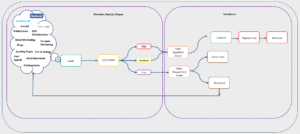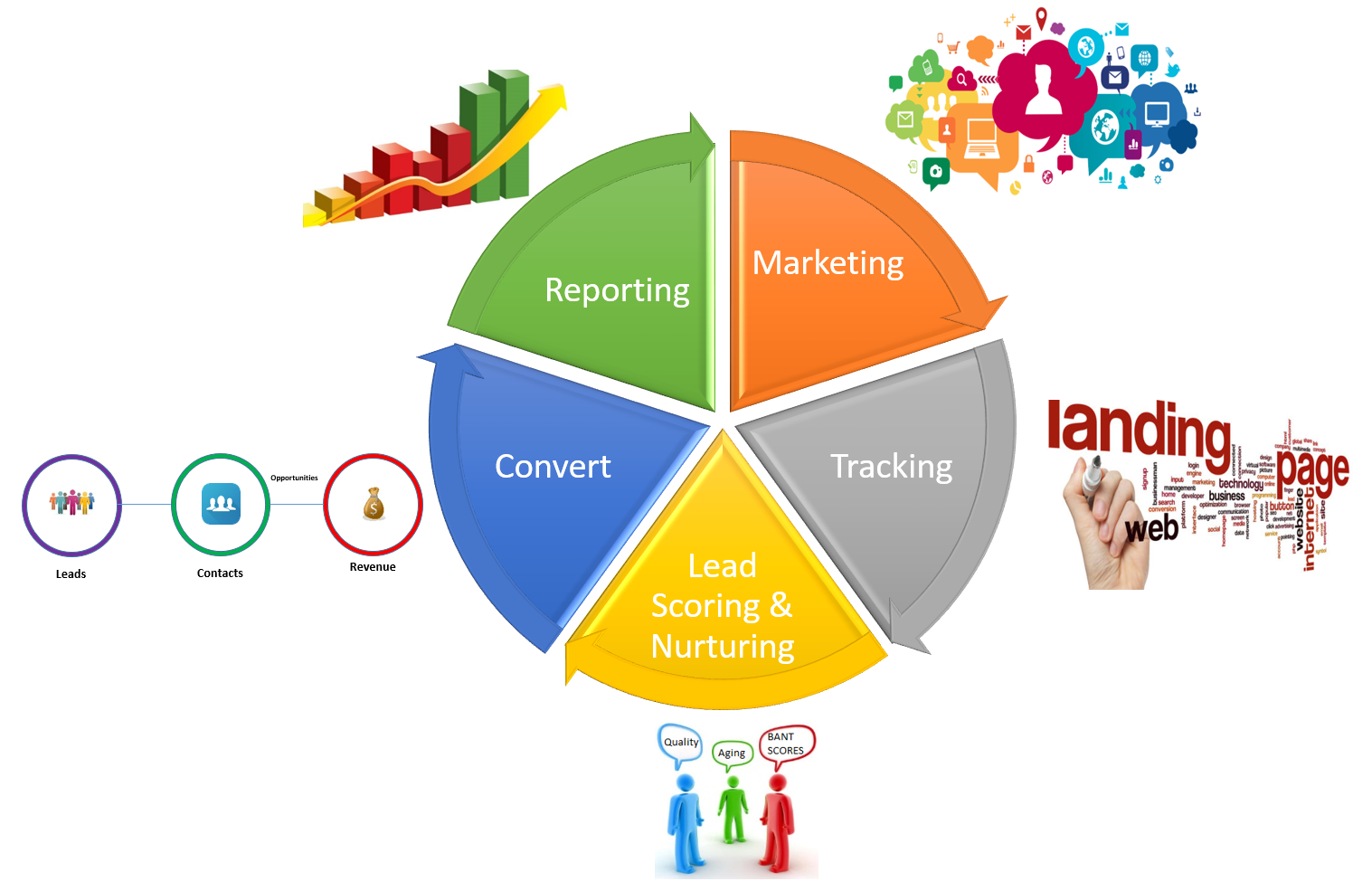Lead management has always been complex and has prolonged life cycles. Hence it has been always difficult to understand what’s working right and what’s not. The good news is salesforce allows us to create, manage, track and report on leads in a way that allows us a full 360 degree view of how our leads turn out and finding our ROI on the effort we are putting in to source more leads.
“Studies say only 13% of the leads gets converted into opportunities and average time for conversion is 84 days. Only 6% of the opportunity converts into a deal.”
Effective lead management strategies can increase the organization revenue and we would like to share some of our insights on improving the process of lead nurture, scoring and customization’s via the salesforce ecosystems and the tools supporting an end to end view.
Capture leads through high quality content
Inbound Marketing – Inbound marketing is different from the traditional Pull market, we have witnessed for several years now. Inbound marketing focuses on advertisement distribution through high tech channels such as Social Media engagement, SEO optimization, blogs, landing pages, call to action and content marketing. This is very unique as it delivers the right content at the right moment. The digital era is broadening the spectrum to reach the target Audiences.
Outbound Marketing is the traditional form of marketing where the organization is sending out the content to a larger audience through Email marketing, advertisements, media ads, Trade-shows, networking, paid search and speaking engagements.
Inbound and outbound marketing today form a powerful combination in generating leads. We can customize your application to track your prospects on social media and other platforms. This directs people to your website and encourage them to download relevant content and thus ensures a regular supply of sales-ready leads.
Now is where “Marketing Automation” plays a major role, it is all about how the organization profiles and communicates with the existing visitors and converts them into new leads. A tight integration between salesforce and marketing Automation solution is a definite need.
“The technology and the tools work hand in hand to create a marketing ecosystem that is able to connect all these activities and make the process trackable, automated and reportable to show our stakeholders the benefits of how every dollar we spend is converting into realized revenue.”
Without marketing automation, we are flying blind. Let’s discuss some of the benefits of adopting marketing Automation
- Save time – Multiple campaigns can be scheduled before in hand hence time and labor can be reduced.
- CRM Integration – This integration’s ensures the lead remains in the system and does not disappear after initial contacts
- Consistency – Unified brand for all your marketing initiatives
- Keep track of your consumers as there are a multiple channels to reach them
- Keep leads and customers engaged by setting up drip campaigns
Marketing Automation enables you to achieve the above outcomes by scoring, profiling and prioritizing leads and then nurture the leads to the buying stage. There is no one-size-fits all approach so before you choose an automated marketing software, you must know what your priorities are. What is your requirement? What are your Must -haves? .Once these are defined, the choice as to right tool becomes easier.
Marketo, Pardot and Eloqua are some of the marketing Automation tools available in the market that integrate well with salesforce. The common Features include Email Marketing, Landing pages, Lead management, CRM Integration, Social marketing and Analytics and Reporting.
 Once the leads are obtained, marketing team works with the sales team to establish criteria for lead scoring. We can get detailed information on the buyer using landing pages, forms and other features captured by marketing automation tools.
Once the leads are obtained, marketing team works with the sales team to establish criteria for lead scoring. We can get detailed information on the buyer using landing pages, forms and other features captured by marketing automation tools.
Lead scoring is a process most business today rely on this scoring for prioritizing leads for the sales team. By tracking the prospects behavior, you can determine their level of interest in your solution. Any lead with a good lead score are considered to be a sales qualified lead and the scores are calculated based on the below criteria
- Quality – Information we have on the lead such as industry, Company size, revenue
- Aging – How long the lead as been in the system, the new leads get a higher score
- Bant Cumulative score – Authority to make the decision, Need and Time frame
The leads with a low scores is either marked as “Nurtured” or “Unqualified lead/ Dead Lead”. The most common reasons to dismiss a lead are
- Lead is not reachable
- Not ready to invest in salesforce
- Already purchased salesforce
- Inaccurate contact
Lead nurturing helps build relationship with potential buyers, even if they are not looking to purchase the product. They will not be our customers over night. However the nurturing process delivers target resources to the leads and tries to move them through the buying process. So how do we nurture the leads with information until they decide to buy?
- What is your lead’s unique preference?
- What challenges are they facing today?
- What topics interest them a lot?
The important aspect here is to consistently deliver rich and relevant content.
In addition to the above discussed topics, it allows us to obtain analytics across entire salesforce platform to allow proper reporting of source, type of industry, revenue, success of various lead generation efforts such as no of leads, pipelines, converted leads and ROI enables us to evaluate the data further and analyze the results based on marketing qualified leads, sales qualified leads, industry, source, location and revenue. Companies that pay attention to each of these steps tend to perform better than their competitor.
“Ensuring that sales have an adequate pipeline of qualified leads, an automated process into moving the leads through the various stage, proper nurturing and scoring processes, customizing the lead assignment rules, campaign management and reporting, efficient opportunity management and the ability to see the 360 degree view of the ROI is the key to continued success.”
What are some of the things we can do to improve the process
- Audit your data model and field usage: Reporting can only be as good as the data behind them. Remove unused fields, keep it simple for the sales team and automate the steps that can be automated to avoid over dependency on the manual data points. Ensure proper field usage and avoid field duplication in salesforce
- Account Management: Once is lead is qualified the job is still just barely started, proper account management and post-sales functions of the Salesforce system are critical to nurture the existing accounts and contacts and treat it similar to the lead process.
- Reporting centric design: Every salesforce implementation should give your sales team a 360-degree view of the customer’s data. The data that is needed to the sales to know what their contacts are looking at, what assets are they downloading, what emails are of interest to them and the audit trails they are leaving behind is paramount in identifying up sell opportunities as well as maintaining high levels of customer satisfaction.
- Automate: Proper use of Salesforce, (Marketo/Eloqua/Pardot), Service Cloud Communities and other Salesforce features streamlines the communication between sales, operations and marketing departments.

